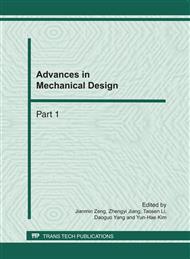p.835
p.839
p.845
p.850
p.858
p.865
p.870
p.874
p.878
The Vibration Characteristics of a Large Flexible Vibration Isolation Structure with Finite Element Analysis and Modal Test
Abstract:
A large flexible vibration isolation structure is presented in this thesis, and experimental modal test based on the finite element analysis is carried out in order to find out the vibration characteristics of it. Results show that the natural frequencies and mode shapes calculated by finite element method basically conform to those measured from experimental modal test. Some suggestion to vibration active control in further research is also provided.
Info:
Periodical:
Pages:
858-864
Citation:
Online since:
February 2011
Authors:
Price:
Сopyright:
© 2011 Trans Tech Publications Ltd. All Rights Reserved
Share:
Citation:


